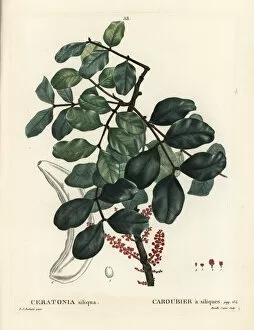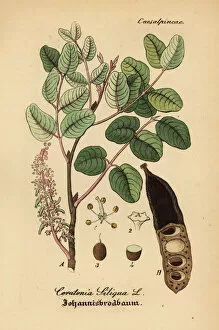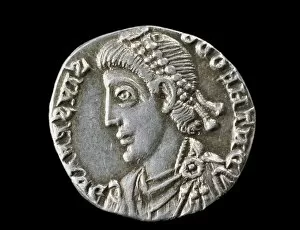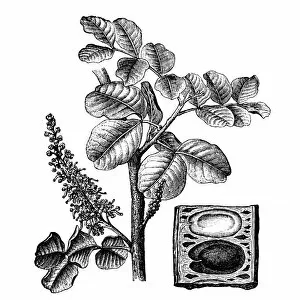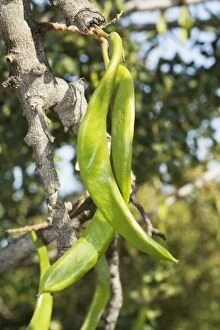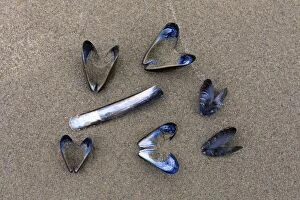Siliqua Collection
"Siliqua: The Versatile Tree of Ancient Rome and Beyond" The siliqua, also known as the carob tree or locust bean (Ceratonia siliqua
For sale as Licensed Images
Choose your image, Select your licence and Download the media
"Siliqua: The Versatile Tree of Ancient Rome and Beyond" The siliqua, also known as the carob tree or locust bean (Ceratonia siliqua), has a rich history that stretches back to ancient times. This remarkable tree not only provided sustenance but also played a significant role in various cultures. In Roman times, the siliqua was highly valued for its pods, which were used as a unit of weight for precious metals. These pods contained seeds that were ground into flour and used as a substitute for cocoa powder. Interestingly, this led to the nickname "black gold" due to its resemblance to liquorice. Emperors like Theodosius I the Great recognized the importance of this tree and even planted them along straight paths through landscapes. Today, these carob trees still stand tall near Neo Chorio in Akamas, Southern Cyprus, adding beauty to the Mediterranean scenery. Picture No. 11073851 captures their majestic presence against the backdrop of Europe's azure waters. Picture No. 11073850 showcases their lush green foliage while Picture No. 10900983 highlights their unique pod shape and texture. But it's not just about aesthetics; these trees have practical uses too. Picture No. 10900982 depicts an old Pod Razor Shell - Ensis siliqua on sand in North Devon—a testament to how nature intertwines with our daily lives. From providing nourishment during ancient times to offering shade and enhancing landscapes today, Ceratonia siliqua continues to leave an indelible mark on both history and modernity alike. So next time you come across a carob tree or enjoy a treat made from its pods' flour-like substance—remember that you are partaking in centuries-old traditions rooted deep within our collective heritage.

